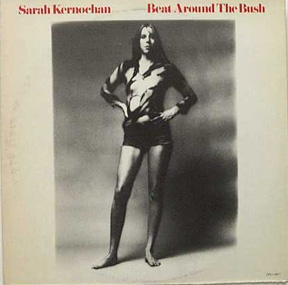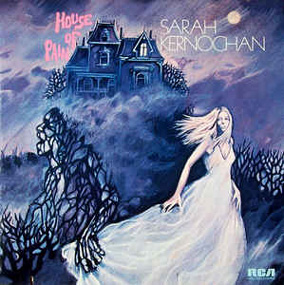CAMERA OBSCURA #7

by Mark S. Tucker
(April 2017)
"This PSF column is named after my 50-issue samizdat from the '80's (some of which were issued as cassettes), titled for the actual camera obscura precursor to photography. I merely twisted the parlance to mean "focus on the obscure." At any rate, I'm starting with LP's that not much of anyone would argue are obscure (and if you're one of the those who would, write yer mother instead; she needs to hear from you, bubbaleh, and I could care less about your objections to my selections, yo)."

BYZANTIUM – Byzantium (A&M and Warner Bros. / 1972), Seasons Changing (A&M / 1973), Live and Studio (Private Pressing / 1974)
If you like Silver, Capability Brown, Krazy Kat, Barnaby Bye, later Rare Bird, the Bee Gees (esp. Odessa) and similar sophisticated pop combos, then Byzantium's right up your alley. Wikipedia, which couldn't purvey a straight fact if it's wrongheaded life depended on it, places the combo under several genre styles - psychedelic, psychedelic pop, psychedelic rock, psychedelic soul, soul, and R&B – none of which is correct. The term 'psychedelic' is probably the most abused, along with 'progressive' and 'legendary,' in all music. Apparently all you need is a few guitar solos, a stray bit of orchestration, and one or two non-hitbound chord changes, and, poof!, you're "psychedelic." Bullshit. If you want prime psychedelia, grab Pink Floyd's Ummagumma, Amon Duul's Wolf City, early Deep Purple, H.P. Lovecraft's short catalogue, and Grateful Dead's "Dark Star" among myriad others, and you'll have the sonic definition of the term: "mind-bending."
Byzantium was a high-energy rockin' pop band taking the mode several notches above itself, just as the groups I first cited above were. Composed of Chaz Jankel (gtr., keybs., vox), Nico Ramsden (gtr., keybs., perc., vox), Robin Lamble (bass, gtr., violin, vox), and Stephen Corduner (drums, perc.), the Byz, as some refer to the ensemble, was overflowing with talent. Then add in Stuart Taylor and Robin Sylvester producing and Roy Thomas Baker at the boards along with David Katz orchestrations, and you have a potent group... or at least the potential for one, not that Byzantium fell short of the mark anywhere, but, as usual, the labels (A&M in the UK, Warners in the U.S.) were packed with stumblebums, and the band never stood a chance as newcomers in the environment. Little PR was vended, no songs ever made it to radio, at least not here in America, not even in underground free-form stations, and thus sales were pretty disappointing.
Regardless, Byzantium manifested in a debut of gorgeous original ballads and lively rockers graced with three-part vocal harmonies, crisp guitar playing, captivating progressions, and rich environments. The record flows as if a concept cycle, though it isn't. Katz's symphonics flesh many songs out to distant horizons, and a generous mellifluity pervades the entire LP, even at its most lively. A&M decided to keep the lads for a second slab, Seasons Changing, an excellent production as well, but internal problems came to the fore as Jankel gravitated to the Motown sound and left. Ramsden split as well, referring to inspecific "musical differences." A&M dropped the ensemble.

Struggling, the group emitted Live and Studio, also called Morning, but in a 100 piece edition. Reports vary as to its availability, some averring it never reached consumer hands, others calling the slab a rarity if you can find it. I haven't a clue one way or the other, but it was re-released on CD through the reprint house Arkama in 2005 with 4 bonus tracks. In proof of the foursome's (and fivesome's) abilities, they all went on to various gigs with Al Stewart, Renaissance, Springsteen, Mike Oldfield, Gong, Rick Wakeman, and a stellar portfolio of some of rock and prog's best, with only later member Jamie Rubinstein forsaking the business altogether.
With, as I never cease to yodel, 50K recordings in my collection, Byzantium ranks very high among them, definitely in the top tier along with a pantload of other excellent rock. Take the releases in order, and you'll be quite the happy camper should your tastes bend toward excellence in pop... which should also prompt you to seek out the groups mentioned in the opening sentence of this review.


TOE FAT - Toe Fat (Rare Earth [US] / Parlophone [UK] / 1970), Toe Fat Two (Rare Earth [US] / Regal Zonophone [UK] / 1971)
Still a prized pair of LP's for the rabid Heep-o-phile, Toe Fat, appearing on the Rare Earth label in the U.S. and a tad hard to find, was indeed the Uriah Heep prototype, carrying Lee Kerslake and Ken Hensley, both ex-Gods (along with Greg Lake), as co-founding members. Successful pop singer Cliff Bennett (The Rebel Rousers) was the vocalist and cause céèbre for the ensemble, but it was Hensley's powerful playing (gtr., keybs., b.vox) which marked the gent for future greatness, nor was Kerslake's muscular drum work negligible. Jonathan Peel, not the famed Brit DJ but another guy, produced Toe Fat - which bafflingly carried the tagline "The Motown Sound" on the reverse cover- and, as Wikipedia informs us, Toe Fat II as well, though his moniker appears nowhere on the U.S. LP.
Toe Fat kicks off with "That's My Love for You," a proto-Heep number with Hensley throwing out power chords along with Ritchie Blackmore-styled psych leads. That's followed by Elton John's "Bad Side of the Moon," a ditty from back when he could write really good tunes, as opposed to his two-decade+ string of drek and cutesy saccharhine soundtrack ditties now... which of course, sigh!, made him even more filthy rich than was the case up to his Hollywood days. "Nobody," covered by Three Dog Night, came next but certainly not in 3DN fashion, filled to the eyebrows with psychedelic riffs, a fat bass sound from John Glascock (later of Jethro Tull), and a racous rave-up end section, everyone on fire and trailing blazons. Weirdly, though the LP was dead-nuts within its era's proto-metal sound, Toe Fat tanked commercially even though the group had toured with Derek & the Dominos. The cover art was one of the illustrious Hipgnosis institution's first works, a strange Magritte-ish manipulated photo.
I grabbed the LP after I was well into Uriah Heep (saw 'em live a half dozen times too) – as said, the thing was damnably difficult to find in the racks, used or new, in L.A. – and dug on it straight out of the gate, transporting the slab over to a pad where a bunch of us music houndz toked up (without inhaling of course, that goes without saying) and listened to no end of great vinyl. Then I got hold of Toe Fat II and was just as pleased, digging on the change in sound toward somewhat jazzy refrains, tons of guitar solos, and outré tracks while leaning more pronouncedly into blues. "Stick Heat" opens with a humorous Ozarky ukelele intro before getting Sabbathy, then "Summer Heat" follows very Wishbone Ashily (I was waaaay into W.A. from moment I heard "Blind Eye" and still am, wotta group!).
Bennett continued his torrid vocal work, and Alan Kendall was an excellent replacement for Hensley, who'd split, along with Kerslake, to form the Heep. Bennett was asked to join Uriah as well but turned it down, later wistfully regretting the decision. Back then, the Rare Earth imprint, a subsidiary of Motown trying to cash in on the rock market, featured quite a few really cool bands, Toe Fat as good as the best they corralled. Regardless, neither album did very well, and the lads were informed they'd no longer be funded, crashing their future on the runway. Surprised? Ya shouldn't be. Business has always been the enemy of art... and of everything else, to boot.
 |
 |
 |
SARAH KERNOCHAN – House of Pain (RCA / 1973), Beat Around the Bush (RCA / 1974)
If you follow film credits closely, then it's likely you've seen Sarah Kernochan's name as writer a number of times: in 9-1/2 Weeks, Dancers, Impromptu, Sommersby, The Hairy Bird (which she also directed), and a number of others. But before all that, Ms. Kernochan released two highly interesting LP's... that went nowhere, as most similarly unorthodox enterprises tend to do. I mean, when your debut album starts out with "Feeding Time at the Zoo" and the following stanza:
I was supposed to be short but sweet
Now look at me, I'm tall and nasty
I think I'll go out and eat
A passing stranger and lastly
For dessert, I think I'll come back and hurt
You in the worst way that I know how
Yeah, that from a winsome sweet-faced hippie chick, or was she?, who could have been an actress, bearing no small resemblance to Peggy Lipton (Mod Squad). That cut may well have been the very first song to carry its title, after which followed many more by diverse hands, some equally cynical but nowhere near as savage. Then there's "Look What the Cat Dragged In," penned looooong before Poison scored a hit under the same title (but not the same song), as witness:
Find yourself a chair
And I'll come and sit on your face
You used to be so mighty high
Now look at this amazing disgrace
Look what the cat dragged in
Not one to mince words or back off from controversial verses and themes, it's hard to comprehend how such an intriguing LP could've fallen into oblivion, but it did, it and its follower. When I ran across both back in the mid-'70's, I was gobsmacked. This was Tom Waits in a rough aggro funk accompanied by vindictive suppressed rage, all the material channeled through an innocent folkie singing-voice quite similar to Janis Ian and others. And the session musicians were impressive: Tony Levin, Joe Beck, Ralph Shuckett, Randy Brecker, etc.
The second LP followed in tone and spirit with songs like "It's Alright, It Won't Bite" ("It's smiling wide and clear to here / Got a big bushy grin says come on in" – um, hell if I know what she's singing about, but why do I suddenly have a ravening hunger for red snapper???), "Ballad of Weird Romeo (A Shitkicker's Nightmare)," and "Can I Get on Top this Time?":
Don't you know she wants more
What a whore
This lady loves a long one
Show the lady how it's done
Long John, big enough
Can't you see she likes it rough
Give her hair a yank
Make her walk the plank
You'll never guess where I've just been
And you'll never know
This time around, in Beat Around the Bush (great!, now I'm hungering for a taco with a strawberry smile!), Kernochan's appareled as though Ellie Mae's (Beverly Hillbillies) long lost sister, and she'd recruited Waddy Wachtel, Ron Tutt, Dan Dugmore, Mike Deasy, Lincoln Mayorga, and a number of others. Rockin', jazzy, mellifluous, and several points in between, it was an excellent follow-up to House of Pain, and, hey!, if Fifty Shades of Grey didn't fill up your sado-maso dance card, then why not check out these two LPs? Don't forget to kneel, slave!
Regardless, following the empty satisfactions of the music world, Kernochan turned to a career in literary fiction and screenwriting, doing well, thank you very much. Though the sonic pastures may have deserted her, she never really forsook them, in 1999, learning MIDI software, moving her studio her dining room, and commenced a years-long project recording songs old and new, completely on her own terms (except for the drums, about which she admits "I suck at"). That secondary woodshedding resulted in her third album Decades of Demos (2013), which I haven't yet heard but, with such striking antecedents, it's gotta be just as eyebrow-raising, dangerous, and satisfying.
Also see Camera Obscura 1
Camera Obscura 2
Camera Obscura 3
Camera Obscura 4
Camera Obscura 5
Camera Obscura 6
Camera Obscura 7
Camera Obscura 8
Camera Obscura 9
Camera Obscura 10